
©Woolly Thoughts 2020

George Boddy and Maisie Oakden
£1 from the sale of each Penrose pattern will go to Kidney Research UK
We also have other patterns for fundraisers, for all charities, with the pattern proceeds going to Kidney Research UK
Free Gift of Life pattern to promote organ donation
Maisie was born in Burton on Trent in 1927. She was educated at Burton High School and, when she left school, wanted to be a nurse. Her father only allowed her a choice between being a hairdresser or a tailoress. She chose hairdressing but, in the later years of WW2 she was able to work as a volunteer nurse. She spent her spare time cycling and youth hostelling.
She married George Boddy in 1947 when she was 19 and he was 27. Their parents lived next door to each other but they did not meet until George came home after serving ten years with the Household Cavalry. When they married, he had just left the Life Guards and joined the Staffordshire Police Force.
They moved to a small Staffordshire mining town. The first time Maisie saw the town she was horrified. It was the winter of 1947 -
From the start she took an active part in the life of the town. Being a policeman's wife, in those days, did not bring wealth but it did provide a certain standing in the community. It also brought responsibility. When a member of the public arrived at the door, and there was no policeman available, she was expected to deal with the problems. In addition to all the normal crimes this might involve dealing with stray dogs, marital disputes and, on one occasion, being asked to remove a cow from someone's garden.
Around 1954 she became the first ‘Lollypop Lady’ in the area so was well-
* * * * * * * * *
In 1963 George was diagnosed with Polycystic Kidney Disease, which was a little-
By 1966 he was on dialysis. This was in the early days of home dialysis when all patients had to be within easy reach of the hospital. His determination, discipline and DIY skills made him the ideal person to trial dialysis 150 miles from base. He was never afraid to try something new and was a willing volunteer to try out any new techniques. Ironically, Maisie got plenty of experience in nursing, looking after George and other patients. They were both also involved in educating others about dialysis, which was a very unfamiliar procedure, even to many medical people. They did this through talks and demonstrations, sometimes using a series of slides, some of which can be seen here.
George and Maisie made a big contribution to the development of the home dialysis system.
George had an unsuccessful transplant in 1969. In the last few years before his death he was no longer able to be a 'bobby on the beat' but his astounding local knowledge was put to good use as Collator of Information. As part of this job he helped to set up the headquarters for a large murder case which lasted several years. He was still a serving police officer when he died in 1974.
* * * * * * * * *
Maisie needed something to occupy her time, despite having a full-
For the first time in her life, Maisie was able to go on a foreign holiday and, over the years, she and Arthur went on several cruises and other foreign trips. She was particularly fond of the Rhineland area of Germany.
They often went to the theatre and were Friends of The Grand Theatre, Wolverhampton. She learned to play Bridge, which was another of Arthur's favourite activities, but she never did master the art of the cryptic crossword.
* * * * * * * * *
Maisie always put others before herself and would do anything to help anyone. In 1986, when she was still a year away from the official retirement age she did not think twice about giving up the job she loved, to look after me and my family.
I had inherited my father's PKD and my progress had been monitored over the years. By 1983, I was, to all outward appearances, living a normal life and working as a teacher in a very demanding school but I had amazingly little kidney function. I was put on a 'low clearance' diet and watched very closely, to try to determine why my body didn't seem to accept what was happening. My condition continued to decline but I still did not feel any ill effects. After three years on the diet it was decided that it was dangerous to continue any longer without dialysis.
I started on dialysis and very soon afterwards, to everyone's surprise, a kidney became available for transplant. I consider that I was very lucky to be 'in the right place at the right time'. The kidney was not a good match (In those days it was thought to be important that there should be a close match.) but I was as good a match as anyone else they had on the list so it was decided to take a risk.
The first few months were very shaky. I was in hospital for seven weeks, I had peritonitis, and it was difficult to get the medicines right. I was part of a trial (One of many trials I agreed to take part in) to compare the effects of Azathioprine and Cyclosporin but it was found that the Cyclosporin was poisoning the kidney and I had to be withdrawn from that trial.
At this time Maisie left her job, never to return, to look after us.
Eventually the kidney settled down. It has never produced the stunning results that many transplantees have but it is almost as good now, nearly 33 years later as it was then (as of June 2019). I hadn't felt ill before but I felt a million times better afterwards. A progressive disease creeps up so slowly you don't notice it. I am eternally grateful to the family who gave their loved one's organs for transplantation.
I did not realise how much my illness had shaped my life. I had knitted and created things because it didn't require much physical effort. With my new lease of life I wanted to take those skills in a thousand different ways. Lots of exciting and interesting paths opened up and I have been able to pursue many of them. I have certainly done an enormous number of things I wouldn't otherwise have done and I have always tried to brighten the lives of others by sharing my skills and knowledge.
A transplant is a treatment, not a cure. There are always side effects. Nobody could have known what the long term effects of some of the treatments might be but the research that has gone on over that time has helped to refine the treatment still further and make the prospects better for anyone needing treatment in the future.
I have seen, first-
* * * * * * * * *
Maisie gave up her job in 1986 but threw herself into all manner of other things. She had different passions at different times. For a time it was flower arranging; that gave way to machine knitting followed by a few years of swimming several times a week. About ten years ago she was drawn into computers and the internet. She went on many courses and passed exams. She was highly amused by the fact that she could get pensioner discount in some shops and student discount in others. The love of computers settled down into an obsession with digital photography and, eventually, movie making. Arthur was always a very willing subject for these activities.
Up until the beginning of 2008 she was very fit and healthy; more active than many people half her age. She would think nothing of going alone on long journeys by bus and train, wherever she had a whim to go. Typically, on an outing with a photographic club in late 2007 she volunteered to be the 'girl tied to the railway line'.
In 2008 she was diagnosed with Multiple Myeloma and associated renal failure. She responded well to treatment for both of these conditions but, sadly, developed an infection which did not respond to antibiotics. She died on July 31.
* * * * * * * * *
When she turned 80 in November 2007, she had a sudden desire to know more about her family. She only dimly remembered her own mother who died when she was a young child and she suddenly realised that she did not even know when her mother was born. We were soon able to find that information and much more. We couldn't find answers to all the questions but we were able to trace one of her ancestors back to 1790. We went on a memorable outing to a family heritage centre where, by sheer coincidence, we met someone who had detailed information, gleaned from researching the family business of that ancestor. Perhaps even more remarkably, we met the son of someone Maisie had been at school with who was there carrying out research about his own mother. She was able to give him some information to help him.
We also found another ancestor, who was born around 1795, and had been a lock-
If you wish to make a donation
go to Kidney Research UK
Contributions from patterns will be forwarded to the fund.
Download our Gift of Life scarf pattern which promotes the organ donation register.
You might also be interested in The Little Yellow Duck Project.
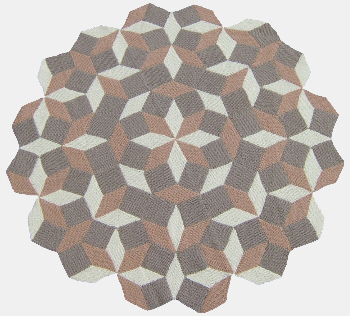
Why Kidney Research?
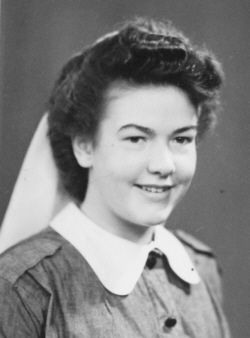
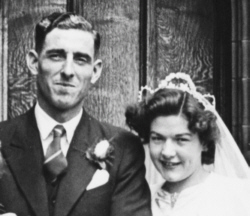
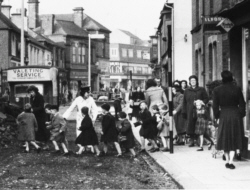
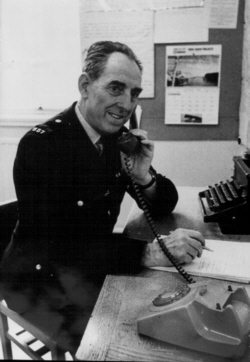
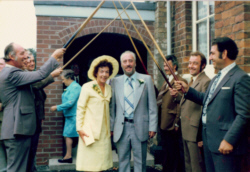
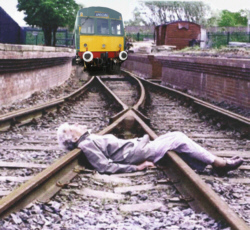
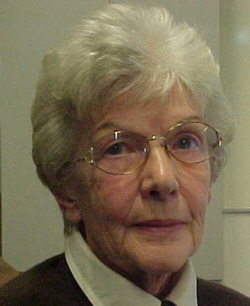
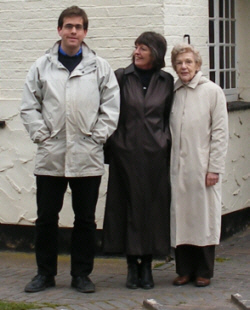
This subtle version of Penrose was made by my mother, Maisie Oakden.
Maisie was very good at dressmaking, and other sewing but wasn't really much of a knitter. I certainly did not inherit my knitting skills from her. When I was a child I had always grown out of any garment she knitted long before it was finished. She had much more success with knitting machines than with hand knitting.
When Steve and I started designing modular knitwear, she became addicted to it, as many people are. Finishing a garment was no problem. Completing one small piece seemed to be a spur to go on and make more. In the early days of Woolly Thoughts she was the test knitter for Have It All Ways, which was our second afghan.
Our original Penrose cushion was made in colours to match her lounge and very soon afterwards she decided to make her own afghan version, which she completed with lightning speed. She always kept it to hand and frequently snuggled under it.
For several years, Maisie also helped man our exhibition stand at various sites such as GMex, NEC and Newark Showground. She would not get involved in mathematical conversations but would enthusiastically discuss the knitting, saying, 'If I can do it, anyone can!'
Her other sojourns into modular knitting include a bag of squares which I still have. There are more than enough squares to make a sweater or jacket but, because there were so many possibilities for assembling them, she never managed to reach a decision. She would spread out the pieces, then rearrange them several times and eventually put them all back in the bag. She spent many a happy hour investigating the patterns that could be created.
£1 from the sale of each copy of Penrose will go to Kidney Research UK.
You can buy the pattern on the Order Form.
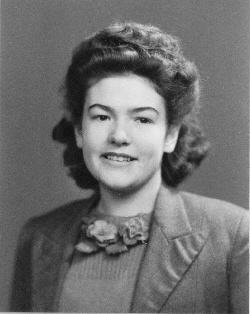
| Introduction |
| Photos |
| Penrose Table |
| Needle Gauges |
| Tribute |
| Little Yellow Duck Project |
| Outside our house |
| Inside our house |
| New Photos 2011 |
| Dialysis photos |
| Other tributes |
| Maths & Puzzles |
| Puppets |
| Sum Wear |
| Toilet Roll Covers |
| Jewellery Dolls |
| Cushy Numbers |
| Pillows of Wisdom |
| Flexagon Cushions |
| Other Cushions |
| Spirals |
| Sweaters - Introduction |
| Hats |
| Scarves & Shawls |
| Crochet Möbius |
| Mathemagical Mittens |
| Mathematical Slippers |
| Simply Circles |
| Roman Mosaics |
| Woolly Thoughts Sweaters |
| Second Thoughts Sweaters |
| More Second Thoughts Sweaters |
| Waistcoats |
| Baby Jackets |
| Irrationals |
| Optical Illusions |
| Hyperbolic Hats |
| Octohats |
| Klein Bottle Hats |
| Mufflermatics |
| The Imitation Game |
| To Bias Or Not To Bias |
| Mostly Holes |
| Enwrapture |
| Maelstrom |
| Windmills Poncho |
| Cats |
| Dogs |
| Sheep |
| Eggsentricities |
| On a Roll |
| Snakes |
| The Sequel |
| Cushion Conglomeration Caper |
| Where to find us |
| Workshops |
| Afghans for schools |
| Group projects |
| Illusion Knitting Tutorials |
| Photos & Comments |
| Want a workshop? |
| South Tynedale |
| Tregarth |
| St Alban's |
| West Jesmond |
| St Oswald's |
| Beckermet |
| Earth School |
| Other schools |
| Cheshire WI |
| East Yorkshire WI |
| Beds Alzheimers Soc |